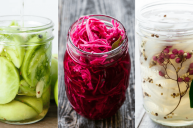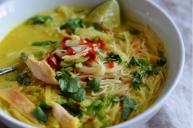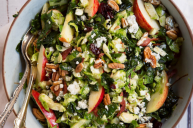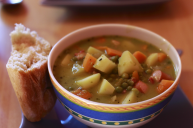[dropcap]L[/dropcap]ove it or hate it, celery is one of those ubiquitous kitchen staples every home cook keeps around. It's a standard base vegetable in mirepoix (2 parts onion, 1 part carrot and 1 part celery, rough-chopped) for soups, stews, smoothies and stocks, and its inimitable crunch is ever-important in stir-fries, not to mention pasta, tuna, chicken and green salads. Plus, it's a great source of vitamin C, vitamin K and antioxidants.
What do you do, though, if your loved ones can't stand the taste? Where do you turn for that one-of-a-kind crunch? And what will you do when (if ever) you want the taste but not the texture? Here are a few celery substitutes to try on your own when you run out of celery stalks and celery leaves.
Look no further than walmart.com for fresh produce delivered right to your car!
1. Bok Choy
https://www.instagram.com/p/CFf0VdCBvd5/
Also known as Chinese cabbage, this crunchy, cruciferous Chinese vegetable resembles Romaine lettuce on top and celery at the bottom. It's actually a member of the turnip family, related to the cabbage, broccoli, and cauliflower of Western cuisines.
When it comes to a celery alternative, bok choy has the crunch you are looking for with fresh celery.
With a light flavor and satisfying crunch, bok choy can be used as a good substitute in cooked and raw dishes. It's also rich in calcium, magnesium, potassium, iron and vitamins A, C, and K. If your recipe calls for celery, just use bok choy.
2. Carrot
Carrots can provide the classic crunch of celery - without the celery - in cooked and raw dishes. For a standard mirepoix substitute, simply double the amount of carrots you use. As for flavoring, your recipe will taste a little sweeter due to the carrots, so adjust your seasoning if needed.
3. Water Chestnut
The Eleocharis dulcis, or Chinese water chestnut, is a staple of many Asian cuisines, but it's also one of the best substitutes for celery.
White, crunchy, and mild-flavored, water chestnuts retain the crispy texture and taste you're looking for.
4. Jicama
Jicama is an excellent substitute for celery. Beneath its off-putting exterior, jicama hides a mildly sweet, nutty, juicy taste and tons of crunch. Just buy some jicama at the grocery store and you're all set.
5. Fennel stalk
In Greek mythology, Prometheus, after stealing the fire from Zeus' lightning, hid it in a hollowed fennel stalk, later passing the gift of fire down to man. While most people are more familiar with fennel as an herb - an aromatic with a taste similar to a mild anise - when cooked, its flavor mellows and becomes very fresh, like celery.
The stalks, often disused in kitchens, are great as a celery substitute in cooked dishes, especially when preparing fish. In terms of texture, you're not going to get closer to celery than this. Oh, and for his act, Prometheus was eternally chained to a boulder in Caucasus, each day his liver eaten anew by an eagle. Bummer. Be thankful for fennel.
6. Green Apple
For those who enjoy their veggies juiced, green apple can easily fill the place of celery in your morning green machine, and it'll taste tart and light to boot. This has a similar flavor to the taste of celery, and will do great in place of a stalk of celery.
7. Cucumber
https://www.instagram.com/p/CUVflvDF0si/
Cucumbers don't taste much like celery, but their cool, crunchy texture is a great substitute for celery for cold summer salads like potato salad.
8. Celery seed
If what you're looking for is celery flavor, celery seed makes a perfect alternative when the fresh vegetable isn't available - or is too expensive during the colder months. Use whole celery seeds or ground celery seeds to get that flavor.
Celery seed has also been used for centuries for its health benefits and medicinal properties.
9. Celeriac
https://www.instagram.com/p/CMFK1jZh3j6/
When you need celery taste, not a similar texture, look no further than celeriac. This bulbous root vegetable is botanically related to celery but is cultivated for its root, rather than its stalks.
Its pale-yellow interior (celeriac needs peeling) is earthy, nutty and intensely flavored; its stalks are woody and slightly bitter. Its leaves, however, when dried impart a stronger flavor, great for soups and stews. Use them like you would any other dried herb.
Do you have any tried-and-true celery substitutes in your kitchen? Let us know!
This post was originally published on November 18, 2020.





